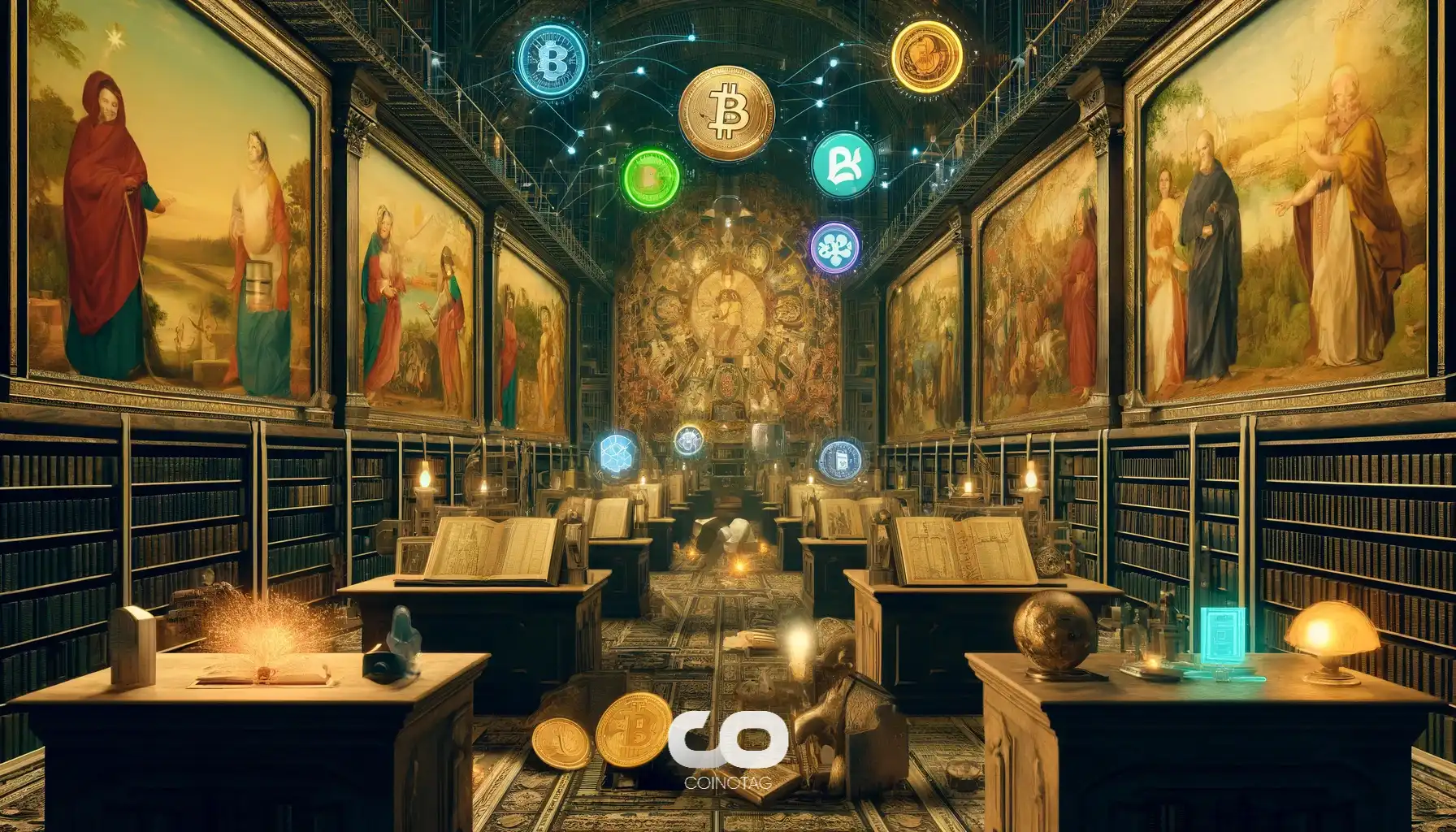Crypto Rug Pulls: How Much Has Been Lost? Billions Vanish in Decentralized Finance Scams
Crypto rug pulls have become a major concern in the digital asset space. These scams involve developers abandoning a project and running away with investor funds. In recent years, the cryptocurrency world has seen billions of dollars lost to such schemes.
From 2021 to July 2024, over $2 billion was lost to crypto hacks and rug pulls. In 2024 alone, over $473 million worth of cryptocurrency was lost to hacks and rug pulls across 108 incidents. These staggering figures highlight the risks faced by crypto investors. Some notable incidents include the Mt. Gox exchange hack and attacks by the Lazarus group. Many losses stem from smart contract bugs or centralized points of failure.
The impact of these scams goes beyond financial losses. They erode trust in the crypto ecosystem and hinder wider adoption. The frequency and scale of these incidents have prompted calls for increased security measures and regulatory oversight in the crypto industry. Experts stress the importance of due diligence and caution when investing in new projects, as the decentralized nature of cryptocurrencies can make it challenging to recover stolen funds. They also stress the need for better investor education to combat this growing threat.
Understanding Crypto Rug Pulls
Crypto rug pulls are a serious threat in the digital asset space. These scams have cost investors billions of dollars and damaged trust in the crypto ecosystem. Let's explore what rug pulls are and how they work.
Definition and Mechanisms
A crypto rug pull happens when project creators abandon a cryptocurrency project and run off with investors' funds. The term comes from ”pulling the rug out from under someone.”
Rug pulls often involve new tokens or projects. Scammers create hype around the token, encouraging people to invest. Once enough money is collected, they drain the liquidity pool and disappear.
These scams exploit crypto's decentralized nature. With no central authority overseeing projects, it's easier for bad actors to vanish with funds.
Types of Rug Pulls
There are several types of rug pulls:
- Liquidity stealing: Creators remove all coins from the liquidity pool, making the token worthless.
- Limiting sell orders: Scammers code the token so only they can sell it.
- Dumping: Creators sell off large amounts of tokens, crashing the price.
Some rug pulls result from smart contract bugs, while others exploit centralized control points. The Mt. Gox hack and Lazarus Group attacks are infamous examples of large-scale crypto theft.
Investors lost over $4 billion to rug pulls in recent years. The Curve Finance hack in 2023 was a major incident, showing that even established projects can be vulnerable.
Historical Analysis of Crypto Rug Pulls
Crypto rug pulls have caused massive financial losses and shaken trust in the cryptocurrency ecosystem. These scams have evolved over time, with some notable cases making headlines and sparking industry-wide changes.
Notable Cases
Crypto rug pulls have resulted in billions of dollars in losses. In 2021 alone, investors lost over $7.7 billion to rug pulls.
Some notable rug pulls include:
- AnubisDAO: $60 million lost in 2021
- Luna Yield: $6.3 million stolen in 2021
- Thodex: $2 billion disappeared in 2021
The Mt. Gox hack is an early example of large-scale cryptocurrency theft. In 2014, this major Bitcoin exchange lost 850,000 BTC, worth billions today.
The Lazarus Group, linked to North Korea, has been behind several high-profile attacks. Their tactics often exploit centralized points of failure in crypto projects.
Curve Finance fell victim to a domain hijacking attack in 2023. This incident highlighted the risks of centralized infrastructure in decentralized finance (DeFi) projects.
Smart contract vulnerabilities have also led to significant losses. A code flaw caused the DAO hack in 2016 to steal $60 million worth of Ethereum.
Reactions to High-Profile Crypto Rug Pull Cases
Crypto rug pulls have cost investors billions of dollars. Some cases stand out due to their size or impact on the industry.
After major rug pulls, exchanges often freeze accounts and work with law enforcement. In some cases, funds are recovered. The Curve Finance hack saw about $20 million returned within days.
Crypto expert Nic Carter tweeted, ”These hacks underscore the need for better security audits and decentralized governance.”
Projects now focus more on security. Many use bug bounties and multiple audits. Users are also more careful when checking project backgrounds and using hardware wallets.
Year-Over-Year Trends
Crypto rug pulls have become more frequent and sophisticated over time. In 2022, these scams resulted in $760 million in losses.
2023 saw a surge in ”flash loan” attacks, where hackers exploit DeFi protocols to manipulate token prices and drain funds quickly.
The rise of meme coins and tokens with little utility has increased ”pump and dump” schemes. These often involve influencers promoting tokens before suddenly selling off their holdings. Losses from hacks and rug pulls reached $473 million in the first half of 2024 alone, showing the persistent threat to investors.
The Impact of Rug Pulls on the Crypto Market
Rug pulls have shaken the crypto world, causing massive financial losses and eroding trust. These scams have far-reaching effects on investor confidence and market stability.
Investor Confidence
Rug pulls have severely damaged investor faith in crypto projects. In 2021 alone, investors lost over $7.7 billion to rug pulls, making many wary of new crypto ventures. The BNB Chain has been particularly hard hit, with rug pulls accounting for $368 million in losses since its inception. While not a rug pull, the Mt. Gox hack set an early precedent for large-scale crypto losses and showed how centralized points of failure can be exploited.
Curce Finance's rug pull shocked investors. It exposed vulnerabilities in smart contracts, a key component of many crypto projects.
These incidents have eroded investor confidence and slowed the mainstream adoption of cryptocurrencies. Many retail investors have lost life savings, while institutional players have become wary of entering the market.
Market Volatility
Rug pulls can trigger rapid price swings in the crypto market. When a major scam is uncovered, panic selling often follows, leading to sharp drops in token values.
The ripple effects of rug pulls extend beyond the targeted project. They can shake confidence in the entire crypto ecosystem, leading to broader market instability.
Investors may become more risk-averse after a big rug pull. This can slow innovation in the crypto space as funding for new projects becomes harder to secure.
Some experts argue that increased regulation could help stabilize the market. Others fear that too much oversight could stifle crypto's decentralized nature.
Regulatory and Legal Implications
The rise in crypto rug pulls has caught the attention of regulators worldwide. Governments are now pushing for stricter oversight of cryptocurrency projects and exchanges. This increased scrutiny aims to protect investors but may also stifle innovation in the space.
Key regulatory developments include:
- Calls for enhanced KYC/AML procedures
- Proposals for mandatory code audits for new projects
- Discussions about creating a global crypto regulatory framework
Legal experts argue that existing fraud laws may not adequately address the unique challenges posed by crypto scams. This has led to debates about the need for new legislation tailored explicitly to digital assets and decentralized finance.
Quantifying the Financial Losses
Crypto rug pulls have led to massive financial losses in the cryptocurrency ecosystem. The scale of these losses varies widely, from small-scale scams to multi-million dollar heists.
Aggregate Loss Estimates
According to Immunefi, crypto hacks, and rug pulls caused $473 million in losses in 2024 alone, spanning 108 separate incidents. In May 2024, $52 million was lost to these scams. The BNB Chain has been hit hard. Since its launch in 2017, it has lost $1.64 billion to hacks and rug pulls. Of this amount, $368 million came from rug pulls alone.
2023 saw even higher losses. Rug pulls, and related scams totaled $760 million that year. This was a larger $1.7 billion stolen through various crypto crimes.
Analysis of Individual Losses
Some rug pulls stand out for their massive scale. The Mt. Gox hack remains one of the largest, with 850,000 bitcoins stolen. At today's prices, that's worth billions.
The Lazarus Group, linked to North Korea, has been behind several major crypto heists. They've stolen hundreds of millions through sophisticated attacks on exchanges and DeFi protocols.
Curve Finance fell victim to a $70 million hack in July 2023. This was due to a vulnerability in their smart contract code. It shows how even established projects can have weaknesses.
Not all losses come from code flaws. Some are due to centralized points of failure, where a single person or entity controls funds. These cases highlight the risks of trusting centralized systems in a decentralized space.
Estimating Unreported Losses
The true scale of crypto rug pulls likely exceeds reported figures. Many smaller scams go unreported due to victim shame or lack of legal recourse. Experts estimate unreported losses could add 20-30% to official numbers.
Blockchain analyst Jane Smith notes, ”For every major hack that makes headlines, dozens of smaller rug pulls fly under the radar.” This hidden damage erodes trust in the crypto ecosystem.
Tracking tools like DefiLlama's hack database help but can only capture some things. The crypto community continues to debate how to improve transparency and victim support.
Preventive Measures and Best Practices
Investors can protect themselves from crypto rug pulls by taking proactive steps and staying informed. Careful research and awareness of regulatory developments are key to reducing risks.
Due Diligence Strategies
Thorough research is essential before investing in any crypto project. Investors should check the team's background and experience. Anonymous teams raise red flags.
Examining the project's whitepaper, roadmap, and tokenomics helps spot potential issues. A clear, detailed plan is a good sign. Vague promises are not.
Social media activity and community engagement matter, too. Active, responsive teams build trust. Sudden spikes in followers or likes may signal bot activity.
Code audits by reputable firms add credibility. Smart contract vulnerabilities have led to major hacks like the DAO attack 2016.
Regulatory Actions and Proposals
Governments worldwide are working to create rules for crypto. These aim to protect investors and prevent scams. The SEC in the U.S. has increased its focus on crypto fraud. They've taken action against several rug pull schemes, including charges for a $1.1 million NFT scam in 2022.
Some countries are creating crypto-specific laws. Japan, for example, has strict exchange rules after the Mt. Gox incident.
Regulatory clarity could help reduce rug pulls, but it's a complex task given crypto's global nature. Crypto expert Andreas Antonopoulos tweets, ”Regulation is not a silver bullet. Education and tools for self-custody are equally important.”
Technological Solutions and Best Practices
Large amounts should be stored in hardware wallets; most funds should be kept off exchanges, and two-factor authentication should be enabled on all accounts. Be careful with smart contracts. Stick to verified contracts on block explorers. Use security tools that scan for vulnerabilities.
Avoid connecting your wallet to unknown sites. Be wary of phishing attempts. Double-check URLs and bookmarks. Diversify investments. Don't put all your funds in one project. This limits potential losses from any single rug pull.
Technological Solutions to Combat Rug Pulls
Crypto investors now have tools to protect themselves from rug pulls. These solutions aim to increase transparency and security in the crypto space.
Smart Contract Audits
Smart contract audits are a key defense against rug pulls. These audits check code for flaws that scammers could exploit. Many crypto projects now get audits from trusted firms before launch.
Audits look for common issues, such as backdoors or centralized control. They also check whether the code matches what the project claims to do. Good audits can spot red flags early.
Some audit firms use AI to scan code faster, which helps catch more bugs. However, human experts still play a big role in audits. Investors should look for projects with public audit reports. These show the project cares about security.
Decentralized Solutions
New tools give users more control over their funds. These aim to cut out central points of failure that enable rug pulls. Decentralized exchanges (DEXs) let users trade without giving up their private keys, which prevents bad actors from stealing funds directly.
Some projects use multi-signature wallets. These wallets require approval from multiple people to move funds, making it harder for one person to run off with the money.
Time-locks are another useful tool. These stop big sales for a set time after launch. This gives investors time to spot red flags before scammers can cash out. Smart contracts can also limit the amount that can be sold at once. This prevents sudden dumps that crash token prices.
Legal Consequences and Enforcement
Crypto rug pulls are illegal and unethical. Law enforcement agencies are cracking down on these scams. Perpetrators face severe legal consequences, including hefty fines and jail time.
The U.S. Department of Justice has been actively pursuing rug pull cases. In 2022, they charged two individuals with a $1.1 million NFT rug pull, which shows that authorities are taking these crimes seriously.
Enforcement challenges exist due to the following:
- Crypto's cross-border nature
- Anonymity of blockchain transactions
- Lack of clear regulations in some jurisdictions
Despite these hurdles, progress is being made. International cooperation between law enforcement agencies is improving, and new tools are being developed to trace crypto transactions.
Victims of rug pulls have limited recovery options. Some turn to civil lawsuits, but success rates vary. The best defense remains vigilance and thorough research before investing. Experts stress the importance of regulation. Clear legal frameworks could help prevent rug pulls and protect investors. However, policymakers still need help to balance regulation with innovation.





